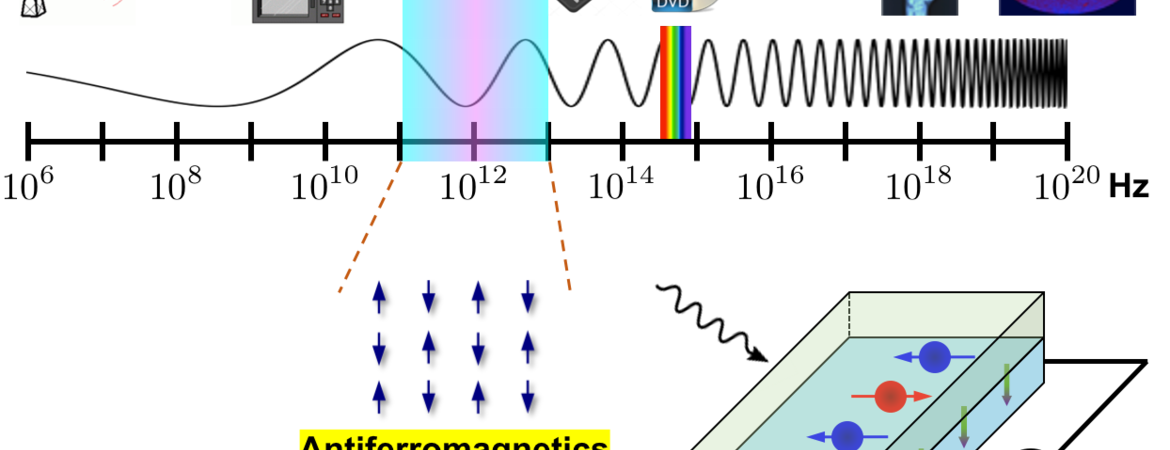Visit UCR Return to Campus website - Take the COVID Screening Check survey

The “Terahertz Gap” between electronics and photonics is one of the most prominent problems in the past century, which refers to the absence of reliable devices (even conceptually) for signal processing, emission, and detection in the Terahertz frequency regime — 1 trillion oscillations per second. Despite numerous efforts, the terahertz gap remains a persisting issue calling for fundamental solutions.
Dr. Ran Cheng, an assistant professor joined UCR in 2018, made a seminal prediction in 2014 that a quantum spin rotating around its own axis can convert terahertz radiation into a measurable electrical signal. This effect, known as spin pumping, had been widely studied in ferromagnetic materials. But it was generally believed that antiferromagnets, which can operate in the much higher terahertz regime, are not possible for spin pumping because spin magnetic moments cancel out at the atomic scale. Dr. Cheng challenged this belief by showing theoretically that terahertz spin pumping based on antiferromagnets is not only possible, but realistic with known materials:
https://journals.aps.org/prl/abstract/10.1103/PhysRevLett.113.057601
His prediction aroused a flurry of worldwide attempts for verification. But scientific progress takes time. After Dr. Cheng joined UCR, he immediately started to collaborate with Prof. Jing Shi’s lab in the Department of Physics and Astronomy to develop this idea into a real experiment. The effect was finally observed in a bilayer structure comprised of chromium oxide (an insulating antiferromagnet) and heavy metals, which was reported very recently in Nature:
https://www.nature.com/articles/s41586-020-1950-4
UCR has a more detailed introduction of this achievement:
Almost concurrently, Dr. Cheng co-authored another experiment that verified the same idea independently. This experiment, led by Prof. Enrique Del Barco at University of Central Florida, is part of a 5-year MURI project (Dr. Cheng is a co-PI) focusing on antiferromagnetic spintronics. The Florida experiment used a different antiferromagnetic material — manganese fluoride, which has a different crystal structure but similar dynamical property as chromium oxide. This experiment has been published in the latest issue of Science:
https://science.sciencemag.org/content/368/6487/160.abstract
Science also published a perspective in the same issue:
At present, Dr. Cheng is actively collaborating with his collaborators to realize the inverse effect of terahertz spin pumping, known as terahertz nano-oscillator, which can generate spontaneous terahertz emission under a DC drive.